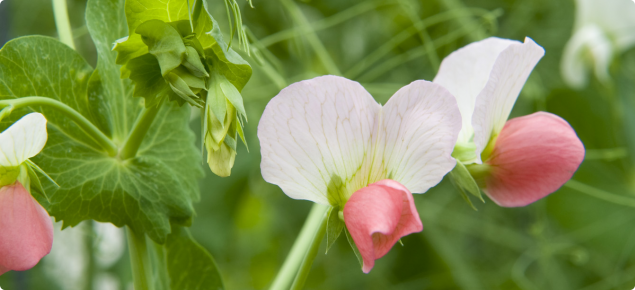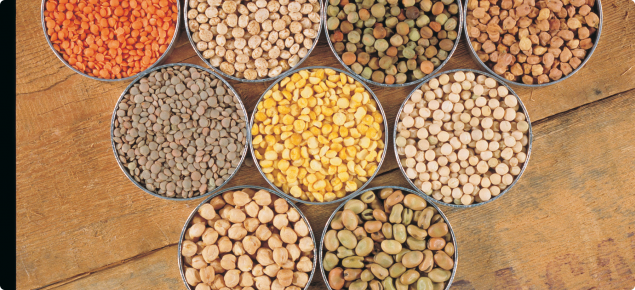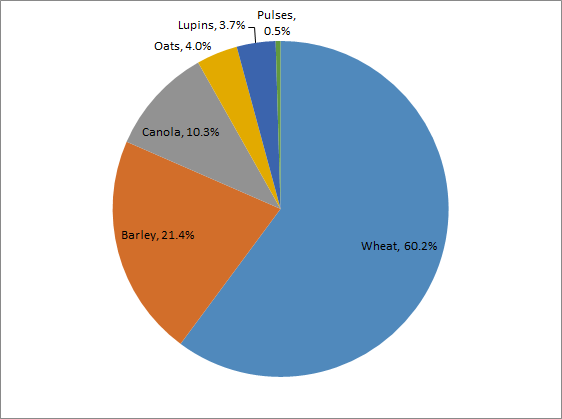Production
Pulse production in Western Australia is small compared to other broadacre crops being grown on 30 000-40 000 hectares, producing 50 000-70 000 tonnes and delivering about $20-30 million to the State economy.
Pulse crops tend to be grown in the medium to low rainfall (350–250 millimetres) environments with chickpea sown at the start of the growing season in May and field peas towards the end of the planting season in June.
| Crop | 2012 | 2013 | 2014 | 2015 | 2016 | 2017 |
|---|---|---|---|---|---|---|
| Field peas | 62 000 | 32 000 | 25 000 | 25 000 | 31 000 | 42 000 |
| Faba beans | 6000 | 9000 | 7000 | 6000 | 11 000 | 4000 |
| Chickpeas | 4000 | 6000 | 4000 | 3000 | 7000 | 8000 |
Field pea
Field pea accounts for the majority of WA pulse production with annual production ranging from 20 000-60 000 tonnes most of which is grown in the southern wheatbelt.
Kaspa type dun peas are the main field pea grown in WA. They are characterised by a round seed with small dimples, and generally a pale greenish-brown (dun) seed coat colour with yellow cotyledons.
Chickpea
WA's chickpea industry grew rapidly from the mid-1990s and rose to be a significant 70 000 hectare grain legume crop until the arrival of the fungal disease ascochyta blight in 1999 devastated the industry. Currently production is less than 10 000 tonnes.
In WA, chickpea are mainly grown in the northern and eastern parts of the cropping region, although a small industry also exists for specialty large seeded kabuli chickpea grown under irrigation in the Ord River irrigation area.
New higher yielding varieties with improved resistance to ascochyta blight have now been developed and may help to stimulate chickpea plantings in WA.
Markets
The Indian Government's introduction of pulse tariffs late in 2017 and subsequent increase in 2018 have changed the destinations for WA pulses.
Field pea exports generate $10-$20 million to the State economy each year with the majority exported for human consumption. China has emerged as our major market in 2017 followed by the Philippines, Bangladesh and Malaysia. Locally, they are used mainly in pig and poultry rations as a source of protein and energy.
Chickpeas also have ready export markets in the Indian sub-continent as demonstrated in 2015 when close to 1 million tonnes of desi chickpeas were exported to the Indian sub-continent from the eastern seaboard of Australia. Following the tariff increases, Bangladesh has become the major market for WA.
The market for faba bean is more limited than other food pulses and is largely restricted to the Middle East, principally Egypt.




